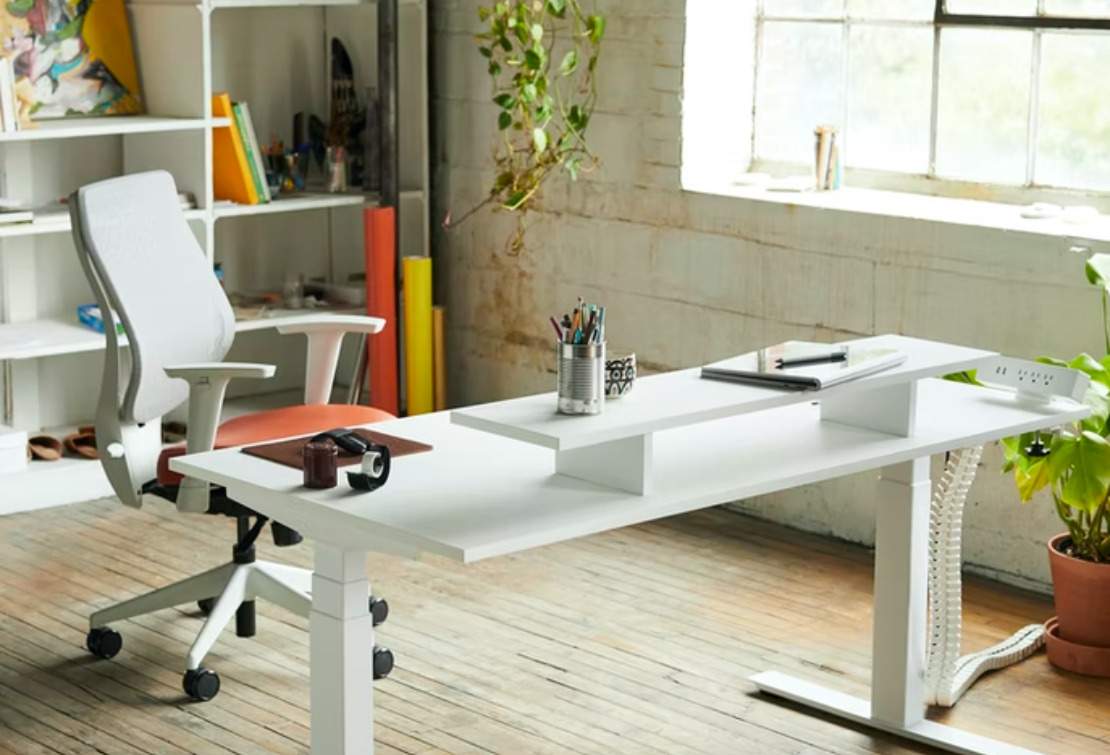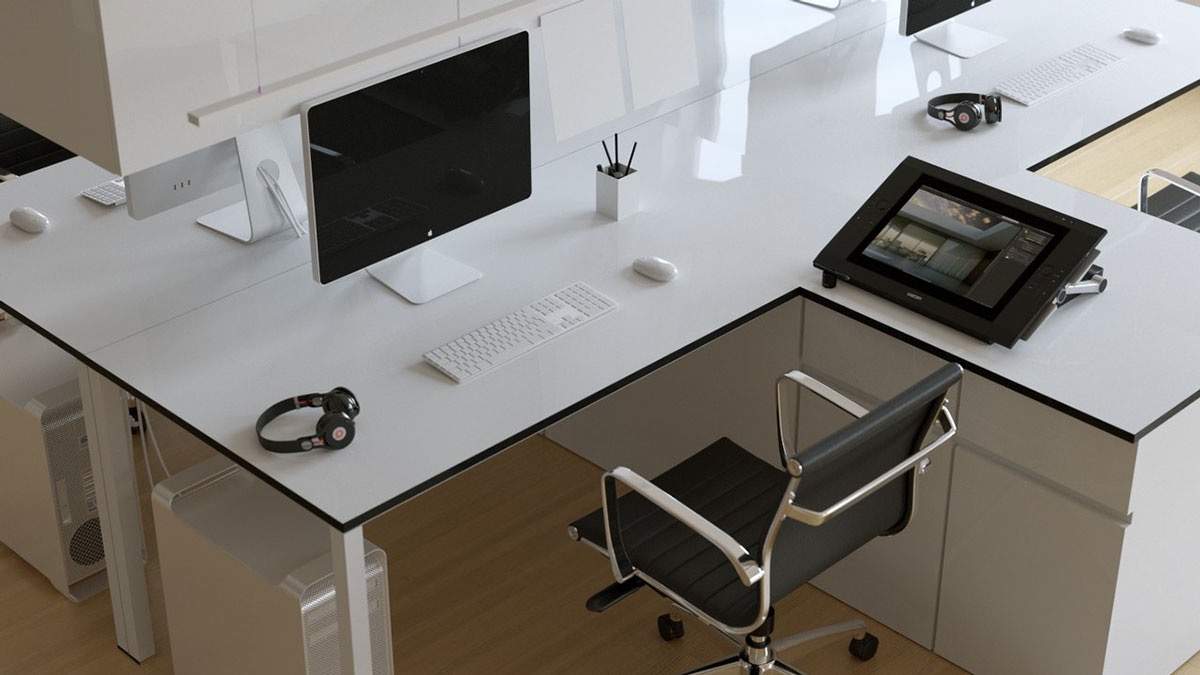Enhancing Workplace Efficiency and Comfort with Ergonomic Office Furniture
It is impossible to overestimate the importance of designing a relaxing and effective workspace in the fast-paced workplace of today. Office furnishings are crucial in determining the general environment and well-being of workers. In this article, the effects of ergonomic office furniture particularly computer workstations and chairs are examined. Businesses can give priority to the physical well-being, comfort, and productivity of their employees by comprehending the advantages of these ergonomic solutions.

The Importance of Ergonomic Office Furniture
The physical health of employees is significantly impacted by the furniture, and this in turn has an impact on their general productivity and job happiness. Traditionalists frequently fail to offer the support and comfort needed for prolonged periods of work.
Adjustable height settings on ergonomic computer desks enable users to personalize their workstations to their tastes. These workstations are made to encourage good posture, which eases the strain on the neck, shoulders, and back. Additionally, they ensure a clutter-free office by offering enough space for computer equipment, paperwork, and other necessary objects.
Equally crucial are ergonomic office chairs, which support the spine’s natural curve and offer enough lumbar support. To suit people of various heights and body shapes, these chairs often provide height adjustment, backrest tilt, and armrest adjustments. Ergonomic chairs lower the incidence of musculoskeletal problems and improve general comfort during lengthy work hours by encouraging good sitting postures.

Why Ergonomic Computer Desks Are Beneficial
A number of advantages are that ergonomic desks can help boost productivity and improve worker health. First of all, the ability to modify the height encourages movement throughout the day by allowing users to alternate between sitting and standing postures. According to studies, switching between sitting and standing can enhance blood circulation, lessen weariness, and boost energy levels, all of which lead to better focus and concentration.
Additionally, ergonomic computer workstations offer enough of the area, enabling workers to effectively organize their jobs. With specific spaces for keyboards, documents, and monitors, workers may reduce interruptions and improve workflow. A clutter-free environment increases productivity and lowers the possibility of accidents or other disasters.
Additionally, cable management systems are frequently included in ergonomic computer desks, keeping wires and cords tidy and orderly. This not only improves the workspace’s aesthetic appeal but also lowers the chance of trip hazards and guards against cable breakage, creating a safer working environment.
The Benefits of Ergonomic Office Chairs
Because they are made to support the natural movements and curves of the human body, ergonomic office chairs have various advantages over conventional chairs. Offering suitable lumbar support is one of the main advantages. The danger of lower back pain and discomfort is decreased by ergonomic chairs’ adjustable backrests and lumbar support elements that follow the natural curve of the spine.
Additionally, adjustable elements like seat height, armrest height, and tilt capabilities are frequently found in ergonomic office chairs. With the help of these characteristics, workers can adapt their seating arrangements to better suit their body types and preferences. This encourages good posture and eases pressure on the wrists, neck, and shoulders.
To further enhance comfort, ergonomic chairs frequently incorporate premium materials and padding. Long durations of sitting are more pleasant because of the breathable textiles and cushions that enable appropriate airflow and prevent the buildup of heat and moisture.
Additionally, ergonomic chairs improve worker satisfaction and morale. Organizations may show their dedication to employee health and foster a productive work environment by making investments in the comfort and well-being of their employees. Employee motivation, focus, and engagement are all more likely to be higher when they are comfortable, which increases output and lowers absenteeism.
Implementing Ergonomic Solutions in the Workplace
Businesses should think about the following actions in order to successfully deploy ergonomic solutions in the workplace:
a. Perform an in-depth ergonomic evaluation: Evaluate the current workplace furniture and pinpoint any areas that require modification. Think about things like adaptability, comfort, and support. To learn more about the unique requirements and preferences of each employee, speak with ergonomic professionals or ask for feedback.
b. Spend money of the highest caliber: Look for respected suppliers and manufacturers who provide a variety of ergonomic solutions. To accommodate a diverse workforce, give priority to features like adjustable height, lumbar support, and configurable settings.
c. Inform and train employees: Hold training seminars or workshops to show staff members the value of ergonomics and the proper way to use ergonomic furniture. Inform them about good posture, the advantages of exercise, and how to comfortably adjust their desks and seats.
d. Take regular breaks: Encourage frequent pauses and movement during the workday by encouraging employees to take regular breaks. This may entail getting up, stretching, and performing brief activities. For workers who want to stand while they work, think about providing standing desks or other workspaces.
e. Routine upkeep and modifications: Create a system for the routine upkeep and modifications of ergonomic furniture. This guarantees that desks and chairs continue to function properly and to offer the required support and comfort.
Creating a Productive and Comfortable Work Environment
Forging employee contentment and enhancing performance requires creating a productive and cozy work atmosphere. The use of ergonomic workplace furniture is essential to attaining this objective.
Businesses can foster a culture that supports employee health and well-being by purchasing ergonomic desks and chairs. Employees are less likely to endure discomfort, pain, or exhaustion throughout lengthy shifts if they are given supportive and comfy furnishings. This in turn aids in keeping their attention and concentration, leading to increased levels of production.
Additionally, comfortable improves worker satisfaction and morale. Employee motivation and engagement are increased when they sense that their bodily requirements are given priority. They are more inclined to perceive the company favorably and feel valued by it.
A culture of health and wellness is also promoted within the company by an ergonomic workstation. Businesses show their dedication to employee well-being by highlighting the value of good posture, movement, and comfort. This may result in lower absenteeism, more staff retention, and a better employer reputation.
Conclusion
Businesses aiming to increase workplace productivity and employee well-being would be prudent to invest in ergonomic things, such as desks and chairs. Numerous advantages come from these ergonomic solutions, including better posture, decreased discomfort, enhanced productivity, and a happy work environment. In today’s competitive business environment, firms may promote a productive and contented workforce by addressing the physical health and comfort of their workers. This will result in long-term success.







